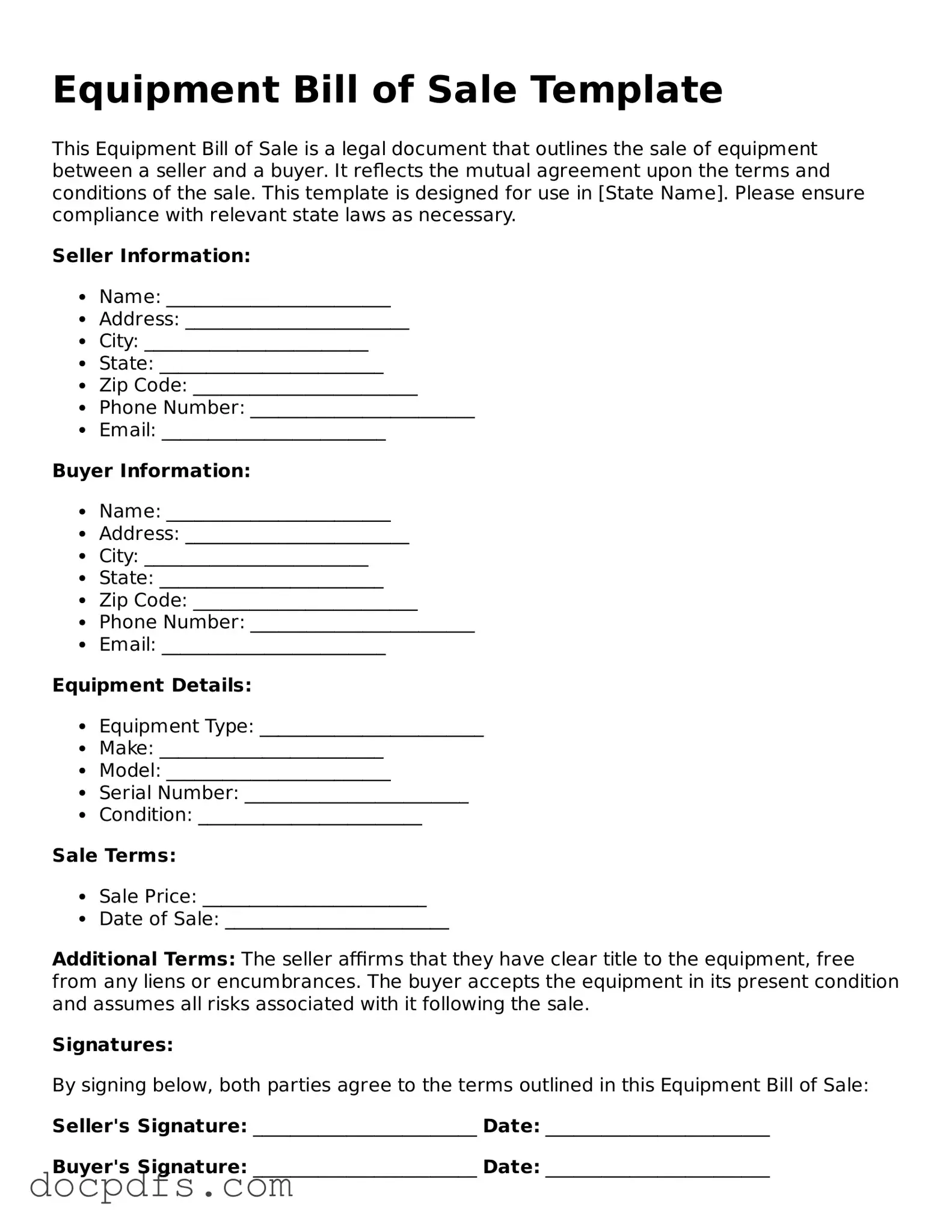What is an Equipment Bill of Sale?
An Equipment Bill of Sale is a legal document that records the transfer of ownership of equipment from one party to another. It serves as proof of the transaction and outlines the details of the sale, including the equipment description, sale price, and the names of the buyer and seller.
Why do I need an Equipment Bill of Sale?
This document is important for several reasons:
-
It provides a clear record of the transaction.
-
It protects both the buyer and seller by outlining the terms of the sale.
-
It can be used for tax purposes.
-
It helps prevent disputes over ownership in the future.
To ensure the document is complete, include the following information:
-
The names and addresses of both the buyer and seller.
-
A detailed description of the equipment being sold, including make, model, and serial number.
-
The sale price and payment method.
-
The date of the transaction.
-
Any warranties or guarantees, if applicable.
Is an Equipment Bill of Sale legally binding?
Yes, an Equipment Bill of Sale is legally binding once both parties sign it. This means that both the buyer and seller are obligated to adhere to the terms outlined in the document. However, it is advisable to have the document notarized for added legal protection.
Do I need to have the Equipment Bill of Sale notarized?
While notarization is not always required, it is highly recommended. Having the document notarized adds an extra layer of authenticity and can help prevent disputes later on. It shows that both parties willingly entered into the agreement.
Can I use a generic Bill of Sale template for equipment?
While you can use a generic Bill of Sale template, it is best to use one specifically designed for equipment transactions. This ensures that all necessary details are included and tailored to the unique aspects of equipment sales.
What if the equipment has existing liens or debts?
If the equipment has liens or debts, it is crucial to disclose this information in the Bill of Sale. The buyer should be aware of any outstanding obligations. It may also be wise to resolve these issues before completing the sale to avoid complications.
How should I keep the Equipment Bill of Sale after the transaction?
After the transaction is complete, both the buyer and seller should keep a copy of the Equipment Bill of Sale. Store it in a safe place, such as a filing cabinet or a secure digital format. This document may be needed for future reference or in case of disputes.
What should I do if I have more questions about the Equipment Bill of Sale?
If you have further questions or concerns, consider reaching out to a legal professional. They can provide personalized advice based on your specific situation and help ensure that your transaction goes smoothly.
